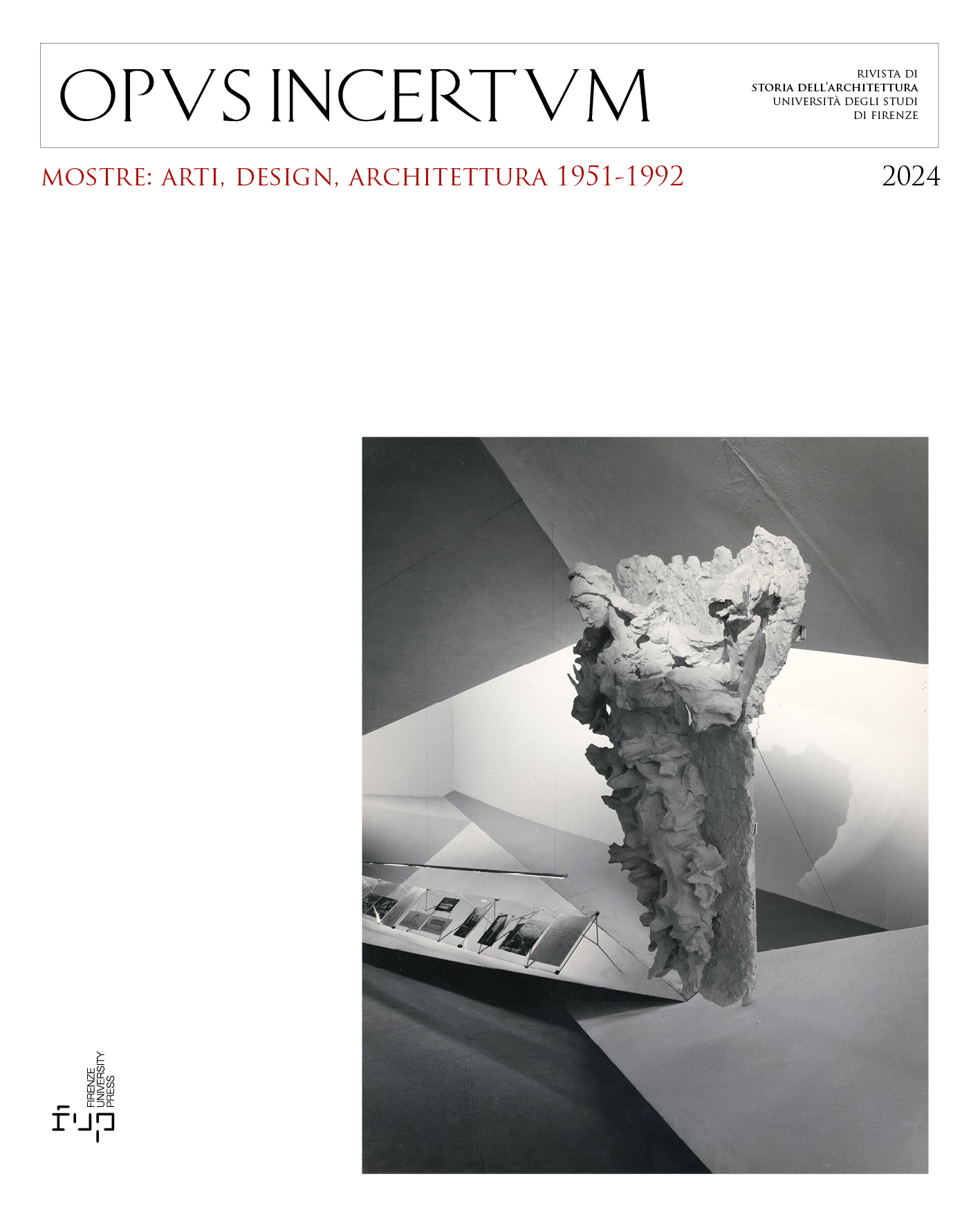Firenze 1977, 'Brunelleschi anti-classico'. Una mostra itinerante, tra storiografia e architettura
Published 2024-12-24
Keywords
- Brunelleschi,
- Bruno Zevi,
- Pietro Sartogo,
- Renaissance architecture,
- Santa Maria Novella
How to Cite
Copyright (c) 2024 Emanuela Ferretti, Filippo Prandini

This work is licensed under a Creative Commons Attribution 4.0 International License.
Abstract
The narration of Renaissance architecture and its protagonists found in the exhibitions dedicated to Michelangelo (1964) and Bramante (1970) two episodes of great significance, which were well studied in their content and exhibition aspects, as well as in the communicative innovations they concretized. In contrast, the exhibition dedicated to Brunelleschi in Florence (1977-1978) has received comparatively less scholarly attention, despite offering an original interpretation of the master's architecture and his role in the fundamental transition from the late Middle Ages to the Renaissance. Curated by Bruno Zevi, the exhibition is characterized by its unique dialectical relationship between the venue – Santa Maria Novella – and Florence itself, celebrated as Brunelleschi’s city. Recurring to specific narrative techniques and innovative exhibition methods, the exhibition positions itself as a sort of laboratory of historiography and museography. On the one hand, it reconnected with earlier exhibitions curated by Zevi or staged by Pietro Sartogo; on the other, it explored new forms to disseminating complex concepts and fostering contamination with contemporary culture.


